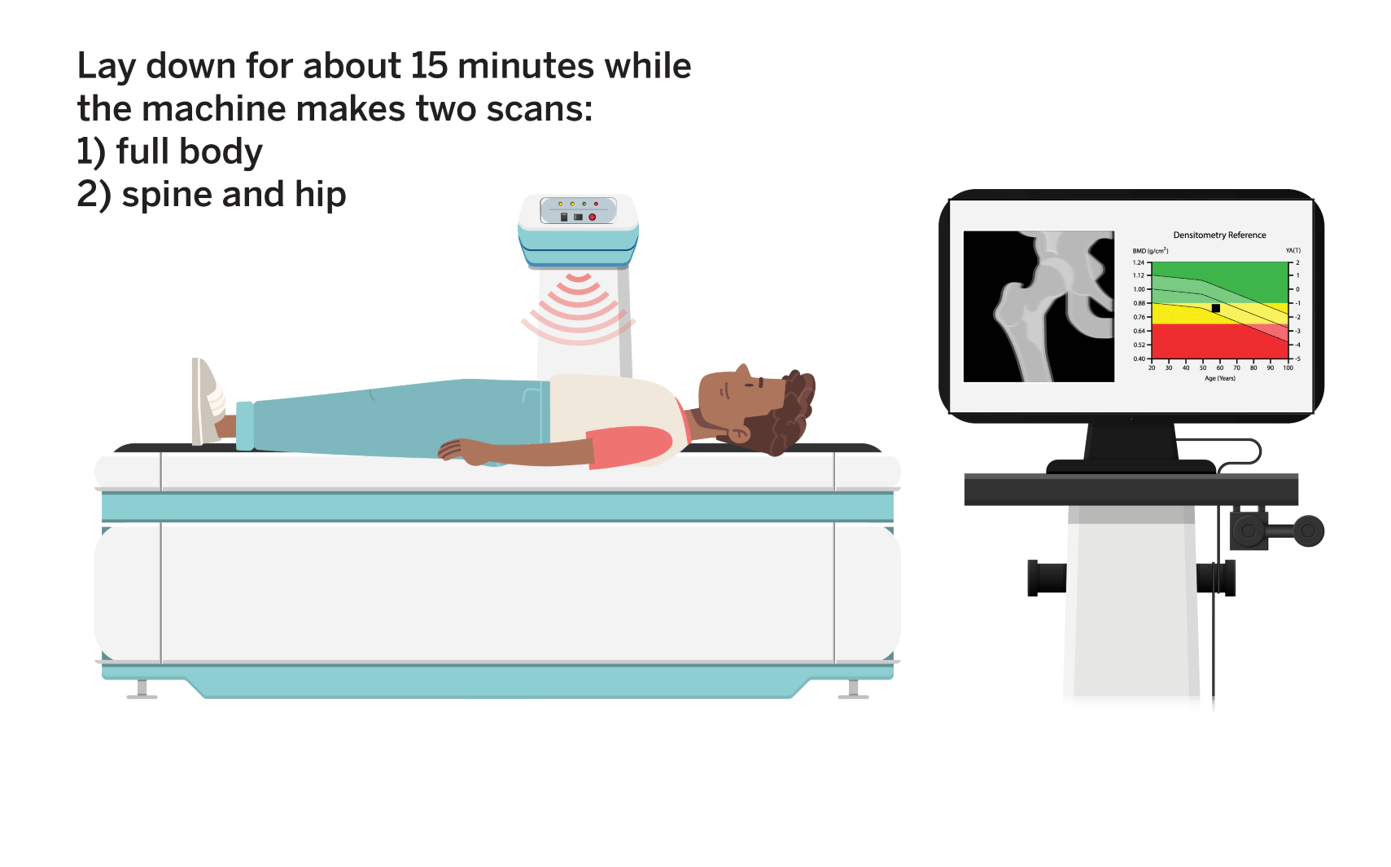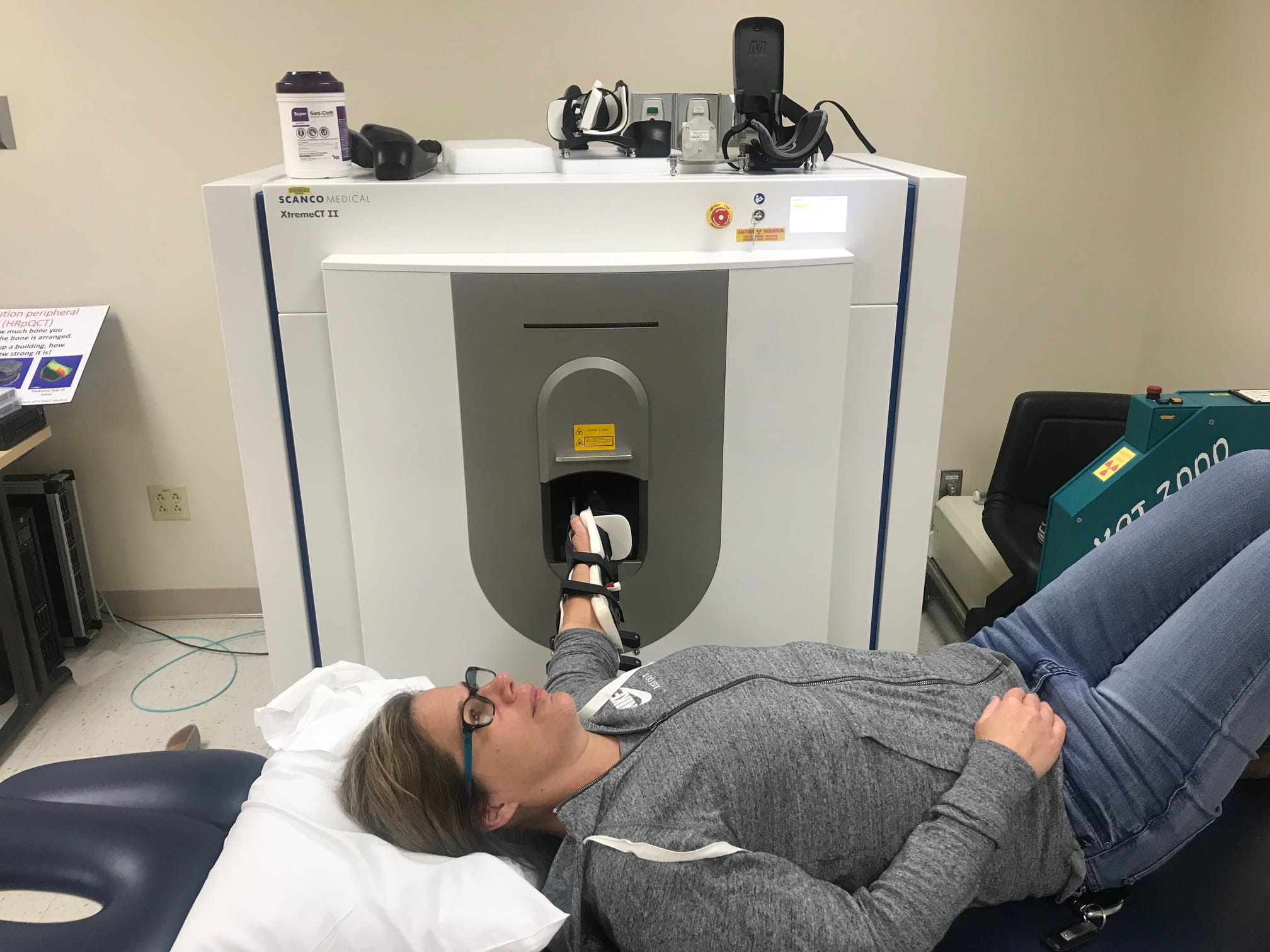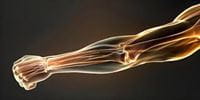Body Composition Scan
The participant lies down on a padded platform while a mechanical arm passes over your body. The amount of radiation the participant is exposed to is very low, much less than the amount emitted during a chest X-ray. The test usually takes about 10-15 minutes and gathers information on the amount of bone and muscle in your body in addition to bone measures in your hip and spine.

CT Scan
A CT scan is a more detailed way to see the structure (or inner workings and connections) of the bones. The participant sits or lies back with an arm or leg resting on a support inside the scanner. The machine will scan more than one place, such as your ankle, lower leg, middle forearm and wrist.

Cortical Bone Mechanics Technology
The Cortical Bone Mechanics Technology (CBMT) assessment applies a small vibration force to the forearm to measure the stiffness of the underlying bones. The arm being tested will be positioned in front of you and the wrist and elbow gently squeezed to help keep the forearm still during testing. A probe will be lowered to be in contact with the skin overlying the middle of the forearm bone/ulna and apply a small force (~2 lbs). The machine will analyze the vibration to determine the stiffness of the bone. The probe will lift off the skin after vibrating and move slightly to test a different part of the bone. It takes the machine 7-8 minutes to test the 10 parts of the bone and the total time anticipated to complete the CBMT testing is 30 minutes.
